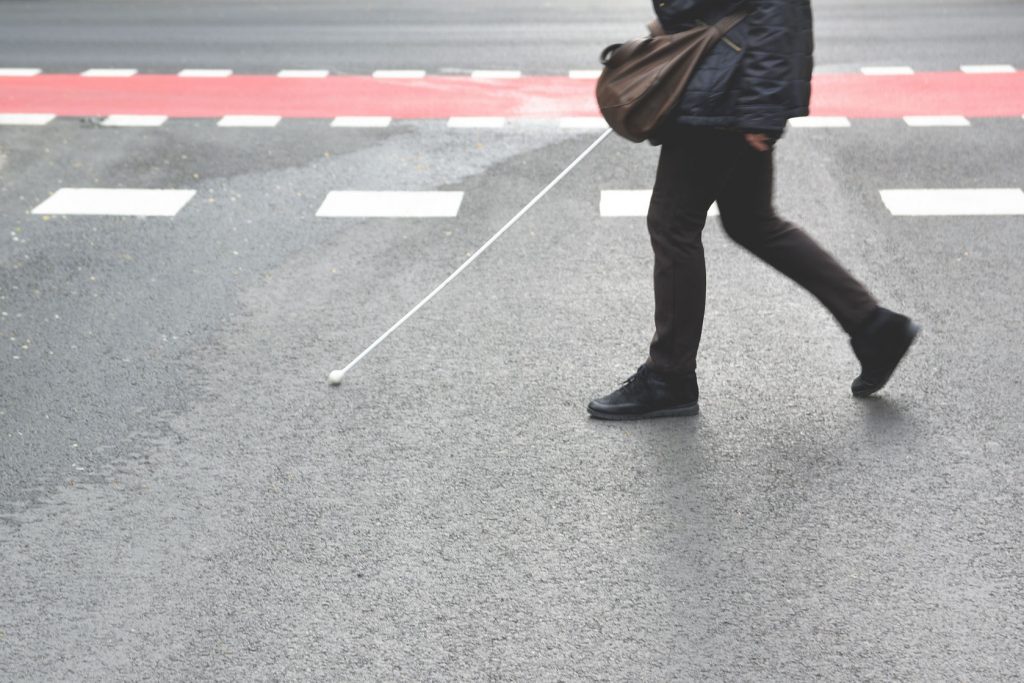I had the privilege earlier this month of meeting students and staff at the Colorado Center for the Blind and going along as an observer on a cane travel excursion. Steve, the instructor, and the two students led the way – with their keen perception and their canes – on a trip through downtown Littleton to find donuts and bagels at a shopping center down the road.
Throughout the journey, Steve asked the students questions about the surroundings and talked about all of the non-visual sensory information around us. I had often walked down that street before, but until that day the rich texture of the cityscape remained beyond my notice. My blind/vision impaired companions had a better sense of our location and of all that was happening in the environment than did I.
That, of course, is the point of the training: for students to discover the rich resource of non-visual perception that informs their ability to safely and freely navigate the city on their own. The experience brought home the power of mindful awareness; of how it can connect us to life changing resources within our reach. And that those resources, like Dorothy’s ruby slippers, have been with us all along.
The same lesson came to mind while teaching a Minding Your Balance class to a seriously balance-challenged group of seniors at an assisted living residence. Poor balance undermines both safety and freedom, and the underlying cause may not be within one’s control to change, e.g., arthritis, neuropathy, Parkinson’s disease. And yet, mindful awareness of sensory information that contributes to the sense of balance made it possible for the students to improve their stability – even in the face of other limitations.
That’s because balance, like spatial navigation, is a sensory/motor skill. That is, the physical ability to balance is only as good as our perception of our body position relative to gravity as we move. Multiple senses weave together in the brain to figure that out, including the inner ear sense-of-motion (vestibular), muscle and joint sensation (proprioception), vision, and touch.
The process happens automatically, no conscious attention required, as long as balance remains unchallenged – whether by health issues or external conditions and activities (e.g., a slippery sidewalk or ice skating and skiing). In the face of a challenge, be it for the athlete or for someone dealing with an impairment or a disease, mindful awareness provides a means for orchestrating better balance control in brain and body.
We already have access to the needed perceptual information – all we have to do is develop the habit of noticing. As with the blind students tuning into the sounds and sensations that inform them about the environment, tuning into the rich sensory input that informs sense of balance opens the door to safely move in the world.
*

